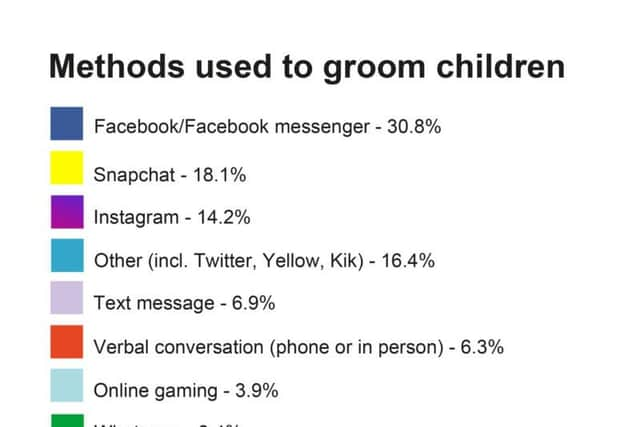Snapchat is the most common method used to groom girls as young as 10 in Northamptonshire


The figure has been released by the children’s charity after a Freedom of Information request revealed 1,316 offences of Sexual Communication with a Child were recorded by police forces in England and Wales in the six months from April 2017, when the law changed, to October 2017. Of that total, 16 incidents were recorded by Northamptonshire Police.
The Freedom of Information request to Northamptonshire Police showed that Snapchat was the most common method used by groomers in the county and girls aged 12-15 in Northamptonshire were the most likely to be targeted by predators. The youngest victim was ten.
Advertisement
Hide AdAdvertisement
Hide AdNow the NSPCC is calling on Government and social networks to develop technology already at their disposal to prevent grooming, and bring in grooming alerts for victims and moderators.


Tony Stower, NSPCC head of child safety online said: “Despite the staggering number of grooming offences in just six months, Government and social networks are not properly working together and using all the tools available to stop this crime from happening.
“The Government’s Internet Safety Strategy must require social networks to build in technology to keep their young users safe, rather than relying on police to step in once harm has already been done.
“If Government makes a code for social networks that is entirely optional and includes no requirement for platforms to tackle grooming, this is a massive missed opportunity and children will continue to be put at risk.”
Advertisement
Hide AdAdvertisement
Hide AdBefore the new anti-grooming law came into force on April 3 last year, police could not intervene until groomers met their victims. In 2015 former England footballer Adam Johnson sent sexual messages to a 15-year-old girl, before meeting her and engaging in sexual activity. Police being able to step in sooner is an important step, but Government must now act to prevent grooming, the charity says.


They argue that this could be done by using algorithms to target adverts at social media users, and to detect illegal content online.
The NSPCC now says the same techniques must be developed to alert moderators of suspected groomers and enable them to notify police.
At present algorithms already automatically flag child abuse images, hate speech and extremist content to moderators for removal.
Advertisement
Hide AdAdvertisement
Hide AdThe NSPCC is calling on the Home Office to work with the industry to use existing technology to flag unusual account patterns associated with grooming behaviours.
Where moderators believe criminal activity is taking place, they can notify police.
Children who are worried about inappropriate messages online can contact Childline on 0800 11 11 or using the online chat function at www.childline.org.uk.